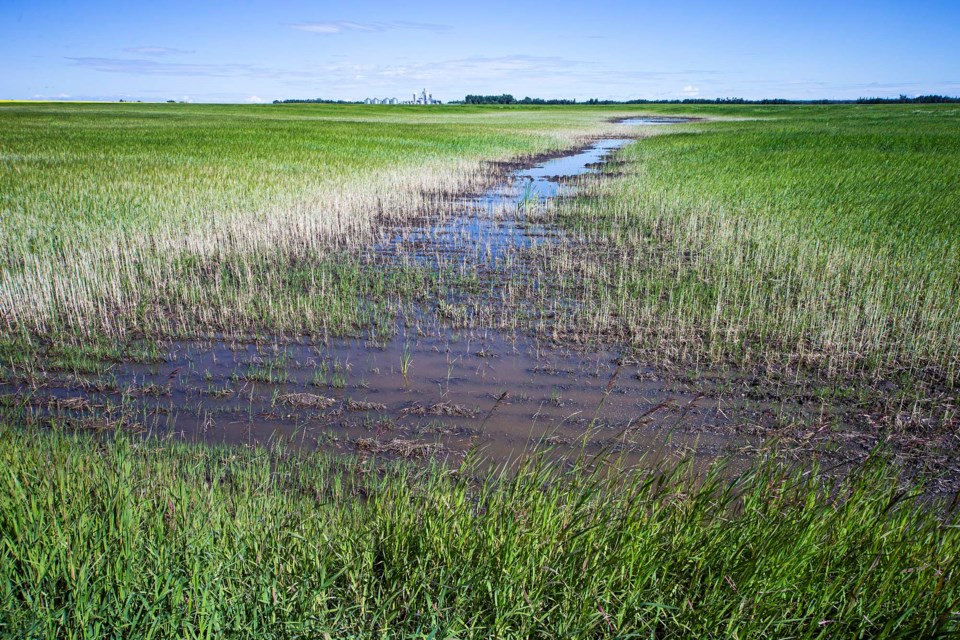Farmers say it’s too darn wet in Sturgeon County, and that’s left us with some of the worst looking crops in the province.
Alberta Agriculture released its latest crop report July 17.
The report found crops in almost every part of the province are doing better than the five-year average. The sole exceptions are those in the northwest region, which includes Sturgeon County.
About 34 per cent of crops in this region are considered to be in good-to-excellent condition, the report found – the lowest level in the province, and far behind the local five-year average of about 65 per cent. Some 83 per cent of this region’s crops were good-to-excellent at this time last year.
The report blamed excessive rain that have left soils saturated. Upward of 175 millimetres of rain fell on parts of this region in the last two weeks, flooding fields and drowning crops.
The Alberta Climate Information Service reported parts of Sturgeon County, particularly around Redwater, have seen more rain this growing season than they had in the last 50 years, and much of the county’s soils are at one-in-12- to 50-year highs for moisture.
All that rain has meant less heat and sun, nutrients lost from the soil and stunted root development, said André Montpetit of Sturgeon Valley Fertilizers. It also caused him to get stuck in the mud on his farm more in May than he had in his entire farming career.
“It’s just so, so wet,” he said.
Montpetit said canola and barley have suffered the most from this moisture, while most of the wheat crops are doing okay. Alberta Agriculture estimated most cereal crops in this region are about a week behind in terms of growth.
Walter Tappauf, who runs a large grain farm west of St. Albert, said his agronomist took a look at his fields just recently and called them “pitiful.”
“So far, we’re going to have half a crop,” he said, referring to his canola, and possibly less than that if there’s an early frost.
“A good hailstorm is what we’re all praying for,” he added, as at least that way he could collect hail insurance on the crop.
It’s the same situation closer to Edmonton, where flooded fields have caused crops to wither and yellow, said Dieter Kuhlmann of Kuhlmann’s Market Gardens. His outdoor crops are about a week to 10 days behind, including his green peas, which are in hot demand this time of year.
“Our customers are not very happy about that,” he said.
Kuhlmann said he’s also seen more crop diseases such as black mould and angular leaf spot (a disease of cucumber) this year, as it’s been too wet to get into the fields to apply treatments. Montpetit said it is tough to say if the same is happening with grain crops – heavy rains could wash away fungal spores, but also make it tougher to apply fungicides.
While Montpetit said many farmers have already written off this year, Kuhlmann said market gardeners could salvage the season if August is dry and windy.
Environment Canada predicted central Alberta would see below-average temperatures and above-average precipitation from July to September.
Visit open.alberta.ca/dataset/2830245 for the latest crop reports.




